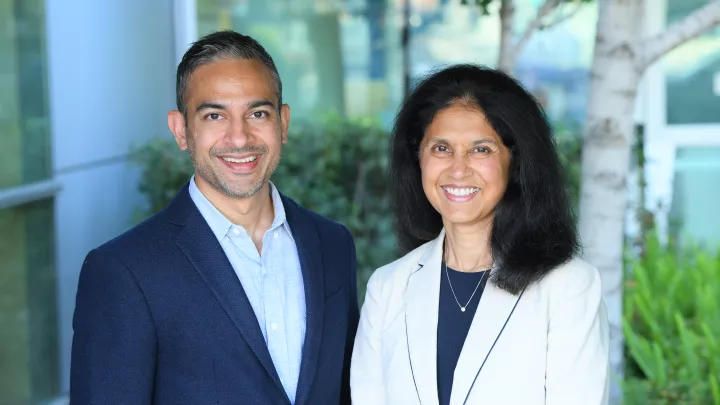
What is a Wada Test? CHLA’s Dr. Sucheta Joshi Tells Parents What to Expect
For children who are undergoing evaluation for surgery to treat epilepsy at Children’s Hospital Los Angeles, the Wada test, also known as the intracarotid amobarbital procedure, can be an important step in the process. During this test, doctors put certain areas of the brain to sleep to help pinpoint which areas correspond to the patient’s language and memory. For those unfamiliar with the Wada test, Sucheta Joshi, MD, MS, FAAP, FAES, Medical Director of CHLA’s Comprehensive Epilepsy Center within the Neurological Institute, explains what families can expect.
When is a Wada test required?
“I take care of children with medically refractory epilepsy,” Dr. Joshi explains. “Refractory epilepsy means epilepsy that has not responded to conventional anti-seizure medications. Many of these individuals undergo evaluations for surgery to treat their epilepsy, but only some of these patients require a Wada test.”
This test, named for the doctor who first performed the procedure, Dr. Juhn Wada, is just one in a large suite of diagnostic testing that can be performed through CHLA’s Comprehensive Epilepsy Center.
In fact, the process of evaluating a patient for epilepsy surgery starts with a series of noninvasive tests to determine where seizures are coming from in the brain—and whether a Wada test might be the next step. These tests include extended electroencephalogram (EEG) tests, which measure the brain’s electrical activity, along with imaging techniques like magnetic resonance imaging (MRI) scans, positron emission tomography (PET) scans and single-photon emission computerized tomography (SPECT) scans, which are all used to create detailed images of the brain.
“Based on the findings of these noninvasive tests, if we determine that we will need to operate on a part of the brain that could impact a patient’s cognitive abilities such as memory or language, only then will we conduct a Wada test,” Dr. Joshi says.
How is the Wada test conducted?
The purpose of the Wada test is to determine which side of the child’s brain is dominant in regards to language skills, and also how each side of the brain functions with respect to memory. The test involves specialists from CHLA's Department of Radiology and Imaging and Neurological Institute.
“First, we do a walkthrough the day before the actual Wada test so that the family and the patient know what to expect,” Dr. Joshi says. The test is conducted the following day.
During the Wada test, a neuropsychologist presents a series of memory queues to the patient, such as cards displaying objects, words and pictures. Next, an angiogram is conducted, which is a medical imaging technique that shows doctors the blood flow in the brain’s blood vessels. Then, a medicine called methohexital is injected into one side of the patient’s brain through the internal carotid artery.
“This medicine essentially puts one side of the brain to sleep,” Dr. Joshi explains. “After the injection, we test whether the patient is able to speak and recall the specific items that were presented to them earlier. And once the medicine wears off, we test the patient again on these items.” Then, the process is repeated – this time with the other side of the brain being put to sleep.
Dr. Joshi says that the Wada test is technically considered an invasive procedure due to the injection. A catheter is inserted into the patient’s groin to inject the medicine, which is the only part of the process where the patient may feel minor discomfort or a slight sensation of warmth. Then, while each side of the patient’s brain is sedated, the patient is awake throughout the test. “Because you’re testing their ability to speak and remember, the procedure has to happen with the child awake,” she says. She also states that the test is not conducted in young children who have not yet developed language skills. It is most often conducted in adolescent patients.
Why is the Wada test important?
By establishing which side of the patient’s brain is dominant in terms of language skills and how each side is associated with memory, the Wada test helps providers decide how best to proceed with epilepsy surgery.
“The test offers us valuable information that ensures we can evaluate the potential impacts of epilepsy surgery on language and memory, which is critical knowledge to have,” Dr. Joshi says. “A family that comes to CHLA for a Wada test will be working with an experienced team of extremely well-trained individuals, which speaks to the strength and depth of our Epilepsy Center and our Department of Radiology and Imaging.”


